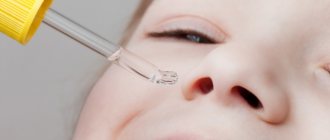Speech therapist
Bratanova
Olga Alexandrovna
Experience 29 years
Speech therapist
Make an appointment
Dyslexia is a disorder related to reading skills. Due to problems with certain mental functions that should be involved in the formation of such skills, a child may experience a variety of difficulties when working with text. Most often, it is difficult to recognize individual symbols and signs - as a result, the meaning of words, phrases or sentences is not captured or is distorted.
The problem appears from childhood and with proper correction can be leveled to a level that allows you to live comfortably and study effectively. But if you don’t pay attention to it at an early age, it remains in adulthood, causing a lot of inconvenience. At the same time, it is important to understand that dyslexia does not determine a child’s development in itself - he can effectively perceive information through other channels, for example, good listening comprehension.
Why dyslexia occurs - the causes of the disease
The main causes of dyslexia are neurobiological in nature. This is important to understand, because often, out of ignorance, parents and teachers attribute reading difficulties to the child’s “laziness” or “inattention,” only triggering the situation. But with such a deviation, certain areas of the brain are less active and also have a reduced density.
Additional causes of dyslexia (provoking factors) are:
- disorders that affect the balance between the two hemispheres of the brain;
- serious, severe infections affecting the brain – the most common example is meningitis;
- traumatic brain injuries;
- complications during childbirth and pregnancy: from infections to fetal asphyxia. During pregnancy, the mother’s bad habits also worsen the situation: smoking, drinking alcohol, and taking drugs.
Social factors also have a serious influence on this deviation. Moreover, they can be completely opposite in their orientation. Thus, symptoms of dyslexia can manifest themselves both from too much study load and from neglect - complete disregard for the child’s development. With isolation, lack of communication, and not a very good environment, the situation only gets worse.
However, let us remember that dyslexia is not necessarily a disease of children from disadvantaged families. Due to purely biological reasons, it can occur in children who live in excellent conditions and receive enough attention from adults.
How are the lessons going?
The child independently goes through one lesson every day for 5-10 minutes a day. The lesson consists of several game exercises, each of which is aimed at developing a specific cognitive skill, the complex of which is necessary for the successful development of reading.
The announcer voices the instructions, the child completes the tasks, receiving hints in case of mistakes and praise when completed successfully. The tasks gradually become more complex within the child's capabilities. Gradually, in a playful way, the child increases his syllable reserve and enlarges the operational reading unit (OPREH) “SG – SGS – SSG, GSS – SSGS, SGSGS”, moving from syllabic reading to reading whole words.
For the purpose of gamification, in addition to the main exercises, the lessons contain entertaining mini-games, memory, puzzle and others, and throughout the training, the character’s appearance develops from primitive costumes to modern youth styles and even costumes of the cyber future.
Regularity and limited frequency are of fundamental importance for training with the SLOGY simulator: you need to train every day, but no more than one lesson per day. This is enough to achieve results, while more intensive use of the program does not speed up learning, but increases the risk of satiety and decreased motivation.
Types of dyslexia
Before describing the specific symptoms of the disease, let's talk about the types of dyslexia. At the moment there are six of them.
- Phonemic (acoustic). According to the classification, dyslexia is the most common problem that often occurs in primary school students. With this problem, children rearrange syllables and distort the structure of the word - for example, instead of “cat” they read “current”.
- Ungrammatical. It assumes errors in composing constructions, for example, a person may incorrectly use endings, cases, tenses (“white table”, “I be hungry”).
- Semantic. He understands every word that a person reads, but separately from the entire text. But he cannot assemble words into sentences or into other, even more complex structures - therefore it is impossible to grasp the meaning of what was read. For this reason, dyslexia in adults and children does not allow them to obtain enough information from books.
- Mnestic. This is a problem at the level of individual letters and sounds, which do not allow one to assimilate or understand the entire word.
- Optical. Here deviations occur at the visual level. For example, a dyslexic person sees a word backwards (mirrored) or cannot keep his eyes on the line he is reading - his eyes constantly slide across the page, not allowing him to adhere to the desired reading sequence.
- Tactile. Specific dyslexia occurs in people who are blind and use Braille to read. With this deviation, letters identified by touch are either perceived incorrectly (they are confused with similar ones) or “slip away” - a person cannot stay on the desired line.
With these types of dyslexia, the symptoms of the disease will be extremely varied and ambiguous.
Prevention measures
It is easier to prevent pathology than to correct it. Develop visual-spatial and speech perception, fine motor skills from an early age. Actively use motor and educational games.
Show pictures of animals, objects, and later words and letters. Children perceive information better visually. What is seen is stored in memory immediately along with the lexical component.
It is important to start prevention long before school. Start all tasks from the simplest ones, complicating them only as you fully master the previous stage.
Symptoms by age
To detect dyslexia, it is necessary to know the full range of signs characteristic of this disease. And there are difficulties here, because there are a lot of manifestations - moreover, many of them differ in age. Let's start with general points, and then we'll talk about what to pay attention to at different ages of the child.
Common symptoms of dyslexia:
- problems with concentration, attention and memory;
- difficulties with orientation in space - for example, when a child confuses right and left, top and bottom;
- difficulties with simple and more complex tasks: from fulfilling a basic request to learning the alphabet and multiplication tables;
- changes in the sequence of letters, syllables, numbers when writing and reading information;
- inability to work well with pens, pencils, etc. If a child needs to write something, he clumsily uses the writing instrument;
- reluctance to read aloud, write, etc. Actions that are very difficult or in which many errors are later discovered cause psychological discomfort in children.
Even some of these signs are a reason to go to the doctor and start dealing with the situation. At the same time, it is very important for parents not to scold the child, not to put pressure on him, forcing him to do something that he cannot do. A softer and more balanced approach is needed here.
They take into account not only the forms of dyslexia, but also how the problem shows itself over time, at different times.
In preschool age, the disease manifests itself as problems in speech, difficulties in learning, and pronunciation of different words. The child is often confused and does not remember even a short set of phrases. It is difficult for him to master basic reading and writing skills, he confuses words and letters. All this can easily affect the quality of communication with classmates and peers - it becomes worse.
At primary school age, problems manifest themselves not only at the level of words and syllables. It is already difficult for a child to remember facts; he gets confused in arithmetic signs. The condition is reflected in the development of new information. Problems of a different nature also continue: behavior becomes awkward, impulsive, and coordination of movements is impaired.
At middle school age, a diagnosis of dyslexia shows poor reading quality and poor memory. The child also reads and pronounces words poorly. Difficulties cause rebellion, so the student refuses to read and write, he has difficulties with gestures and facial expressions, and problems in communicating with peers intensify.
At high school age, problems remain with writing, reading, memorizing, and reproducing information. A slow speed of work develops, which makes the teenager seem “lazy.” Moreover, the problem extends further - often dyslexics have difficulty adapting to any changes in life.
Symptoms of dyslexia in adults include problems with writing and reading, with added absent-mindedness and inattention. An adult with such an illness often does not know how to plan his time - the quality of life decreases.
Are you experiencing symptoms of dyslexia?
Only a doctor can accurately diagnose the disease. Don't delay your consultation - call
Diet
Fats play an important role in children's nutrition as an energy source and a component of cell membranes. Fats are suppliers of fat-soluble vitamins, linoleic and alpha-linolenic fatty acids. Omega-6 linoleic acid and omega-3 alpha-linolenic acid are essential polyunsaturated fatty acids (PUFAs). The main function of these fatty acids is the formation of cell membranes. The body does not synthesize linoleic and alpha-linolenic fatty acids, so they must be supplied daily with food in the form of nutritional components or dietary supplements. omega-6 and omega-3 acids are needed for brain growth .
If there is an insufficient amount of them in the diet of the pregnant woman and mother, growth is delayed and neurological disorders develop. The main sources of omega-3 PUFAs are salmon, mackerel, trout, sardines, herring, halibut, seafood and flaxseed oil. Omega-6 is found in nuts and vegetable oils (soybean, sunflower, rapeseed, olive).
Many authors propose the use of LCPUFAs (long-chain polyunsaturated fatty acids - arachidonic and docosahexaenoic) to correct cognitive impairment in children with attention deficit, hyperactivity , dyspraxia (impaired motor functions) and dyslexia .
Long-chain fatty acids are synthesized in the body from PUFAs. Omega-3s are synthesized from alpha-linolenic acid, and omega-6 from linoleic acid. However, the process of converting PUFAs into LCPUFAs is multi-stage and certain enzymes are not always present in the required quantities or they are not active enough in the first months of a child’s life. of docosahexaenoic acid for neuronal development cannot be formed
Docosahexaenoic and arachidonic acids are found in predominant amounts in the gray matter of the brain and are important substrates for the development of the nervous system. Their role is especially great in the prenatal period and the newborn period, when derivatives of these acids (neurotransmitters) perform an important function - they stimulate neurogenesis . These fatty acids are found in breast milk and are of great importance in the metabolism and brain development of children in the first year of life. Children of the first year grow and develop quickly, therefore, for adequate development, their nutrition must include the optimal amount of essential nutrients. In the first months of life, this is provided by mother's milk and infant formulas that are enriched with LCPUFA. In human milk, linoleic acid predominates, followed in descending order by arachidonic, alpha-linolenic and docosahexaenoic acids. Docosahexaenoic acid in the form of fish oil is added to the milk mixture, and the mixtures are also enriched with arachidonic acid, since its derivatives stimulate the growth of nerve fibers and brain development. Examples of such mixtures are Frisopre (for premature babies), Frisolak GA (hypoallergenic mixture), and for improving cognitive development - Frisolak 1 Gold and 2 Gold , Frisolak 3 for children 1-3 years old.
Treatment and correction of dyslexia in Moscow
Speech pathologists and psychoneurologists can make a diagnosis of dyslexia. A speech therapist, whom parents often turn to if they notice problems with speech or reading in a child, can also refer you for additional examination.
Experts say that no two dyslexics are alike, so treatment for dyslexia is individualized. Often difficulties remain with a person for the rest of his life - and then it is important to understand how to improve its quality, how to help a child cope with the main tasks of life. In other situations, a fairly high-quality correction is possible. For these purposes, a special speech therapy program is selected. It is based on the type of dyslexia, the person’s age, as well as his personal characteristics.
Drug treatment for dyslexia remains questionable at this time.
What measures should be taken if a child has a disease?
with the correction of dyslexia in younger schoolchildren . Depending on the type of disorder, certain dyslexia treatment methods are used.
However, in the end, it is worth noting that despite all the negative consequences, the mentioned consequences do not prevent people from finding their calling in other areas of life. As a rule, such patients subsequently become creative individuals. Many parents think that this disease can negate the child’s further development, but as an example we would like to give you famous people who suffer from dysgraphia and dyslexia : Albert Einstein, Hans Christian Andersen, Monroe, Tom Cruise, Keira Knightley and others.
The most important thing is to accept the disease and provide the child with quality care to further become a specialist in a certain field.
Common questions and answers
Is it possible to cure dyslexia completely?
It all depends on the specific situation. Sometimes it is possible to correct the problem to such an extent that it does not affect future life. But it is important to start work on time.
Who treats dyslexia?
We have already partially answered this question about dyslexia, what it is and how to treat it. After making a diagnosis and excluding other pathologies, the main treatment is carried out by a speech therapist according to a special program.
Is dyslexia always an intellectual problem?
In no case. With the right approach, a child with dyslexia can not only get a good profession, but also become very successful in it. Suffice it to say that such famous people as Steve Jobs, John Lennon or billionaire Richard Branson were dyslexic.
Dyslexia is by no means a death sentence, but a problem that requires careful attention from adults. If they put in the effort and time, the child will have a chance at a good education and a great future.
About our Center
Our center’s specialists (neurologist, neuropsychologist, speech therapist, speech pathologist) will diagnose the level of mental and speech development, assess the state of cognitive functions using special tests, exercises, and neuropsychological studies.
Based on the diagnostic results, a program of correctional classes is selected for each child individually. No two children with dyslexia are exactly alike. The best and “working” version of correctional classes is built in 4 stages: two stages of intensive multidirectional correctional work by a neuropsychologist and speech therapist-defectologist - 15-30 lessons daily - for start and consolidation, and two stages of intermediate maintenance correction - with a multiplicity of 2-3 once a week. The entire treatment process takes up to six months, when we can confidently talk about achieving a lasting therapeutic result.
Confession
Linguist Evelien Krikhaar says that in Groningen, parents who experienced learning difficulties in childhood show great motivation to cooperate.
This is important because the research is quite intensive. In laboratories in Amsterdam, Groningen and Nijmegen, 9 brain studies were performed on each child - the last study was carried out when the child was 41 months old. Something like a rubber swimming cap was placed on the child's head, into which a large number of electrodes were installed to measure the electrical activity of the brain. Based on the fact that children with dyslexia have difficulty distinguishing between sounds, the infant heard the word "buck" interspersed with the word "duck" from time to time. The brains of infants in the control group - without a hereditary risk of dyslexia - already at two months of age gave a “inconsistency response,” i.e. was able to unconsciously notice the difference. At-risk infants—those from families with at least one parent with dyslexia—showed significantly reduced or delayed nonconformity responding. “An amazing result,” says Krikhaar. "It's interesting that there are differences between groups of children as their brains continue to develop."
Heredity
In the search for early warning signs of dyslexia, heredity studies play an important role. In Nijmegen, Dr Barbara Franke is studying the genetic origins of dyslexia. Using material from three large families in which many people suffer from dyslexia, she investigated the genetic causes of this condition. Franke: “In one of the three families examined, it was actually possible to find a place on the X chromosome in which the dyslexia gene may be located.” Franke focuses on this particular family. "There is no gene for dyslexia. We think that most often we are dealing with the accumulation of small genetic defects."






